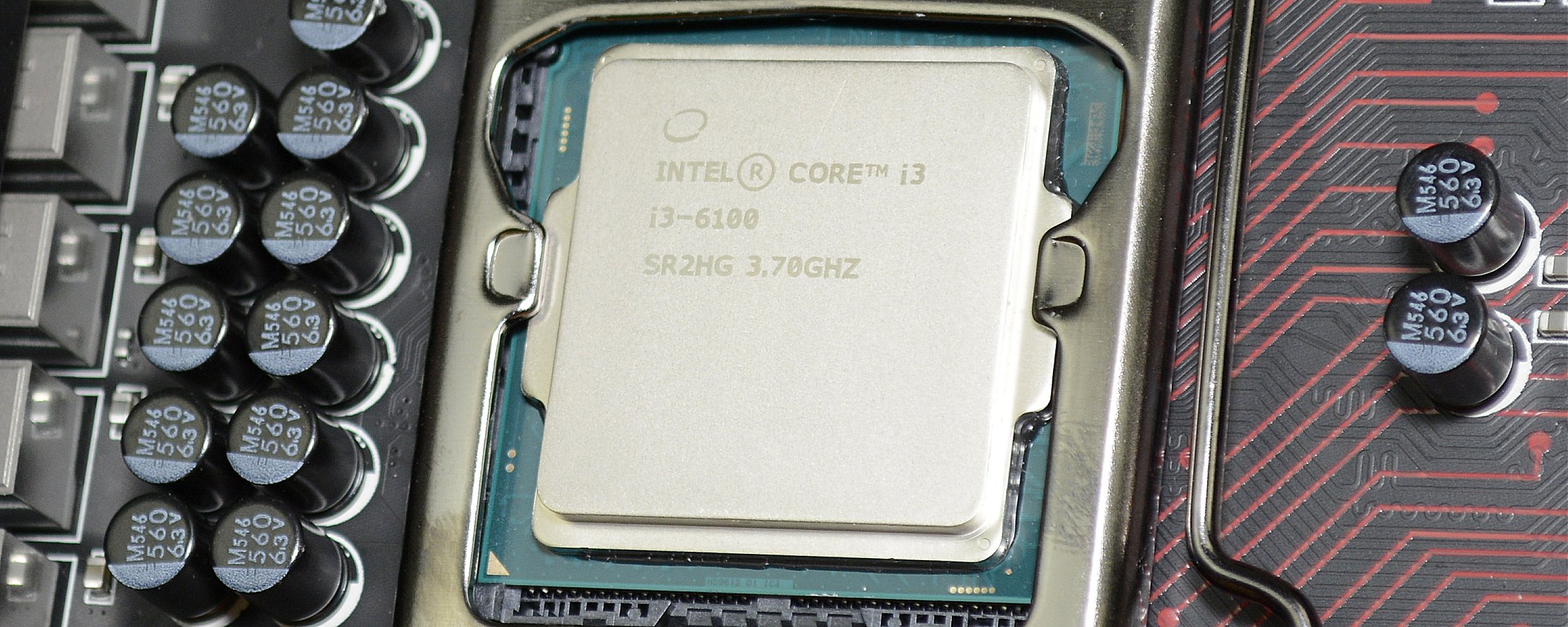Early this year we compared AMD's $150 quad-core FX-8320E processor with Intel's $150 Core i3-4360 and $185 Core i5-4430. On paper it looked like a no brainer: the FX-8320E boasts 8 threads capable of running at up to 4GHz out of the box and is fully unlocked to boot.
The Haswell-based Core i3-4360 is a dual-core processor backed by Intel's HyperThreading technology for four threads and unlike AMD's chip, the i3 is locked at 3.7GHz with no hope of being overclocked. It's a similar story with the pricier Core i5-4430, which can only clock its four cores as high as 3.2GHz and without HT support there are only four threads available.
After years of benchmarking AMD's Piledriver-based processors, it's no secret that they aren't the most efficient. That said, we had never looked at power consumption so closely before, especially when overclocking.
We ran the FX-8320E at a reasonable overclock of 4.6GHz and even at that frequency it was for the most part slower than the Core i3-4360 when gaming and shockingly when encoding. Worse still, the overclock made the FX-8320E consume around 60% more power on average.
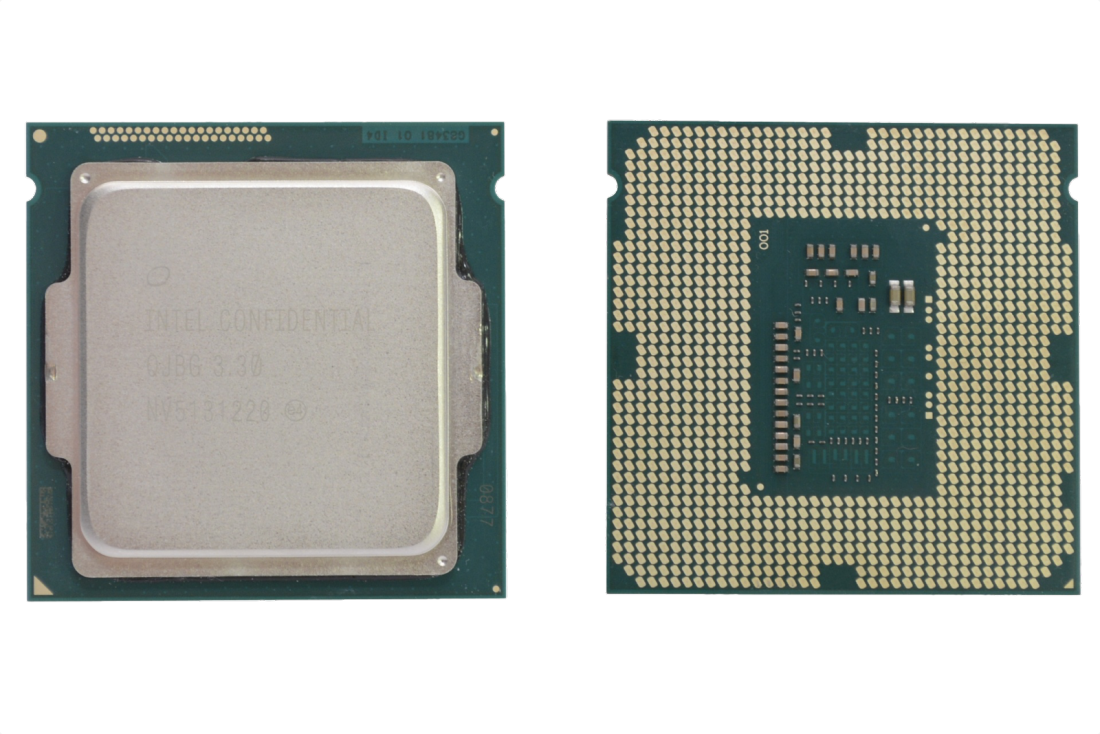
By the end, it became clear that wise consumers would be looking at the Core i3 and Core i5. Gamers will find the Core i3 to be the better value option, while the Core i5 is better equipped for heavier tasks like encoding.
In the nine months since we published that article, the FX-8320E is still $150 and AMD's go-to option for budget quad-core computing without integrated graphics.
Meanwhile, the landscape has shifted on Intel's side of the fence as we've recently seen the arrival of its new Skylake-based Core i3 and Pentium processors, the first of which was the Core i3-6100. At $125, the new dual-core chip comes clocked at the same 3.7GHz as the Haswell 4360/4170 models, except the i3-6100 has the advantage of being even more efficient thanks to an updated design using the 14nm process.
After being disappointed in August by the marginal performance between Skylake and Haswell Core i7s, we're interested in seeing how the i3-6100 stacks up against the older i3-4360, as well as the i5-4430 and the overclocked FX-8320E.
Synthetic Benchmarks
Intel's specification for the Core i3-6100 calls for a maximum DDR4 memory speed of 2133MHz, so technically by using any memory faster than that you are overclocking. Moreover, the cheaper H170, Q170 and B150 motherboards are all limited to 2133MHz memory support. Therefore, in order to run faster memory users will be required to shell out for a Z170 board, which isn't going to be an option for some budget-conscious consumers.
In an effort to cover all bases we benchmarked the Core i3-6100 with both DDR4-2133 and DDR4-3000 memory on a Z170 motherboard to see what kind of difference consumers can expect to find when running different memory speeds.
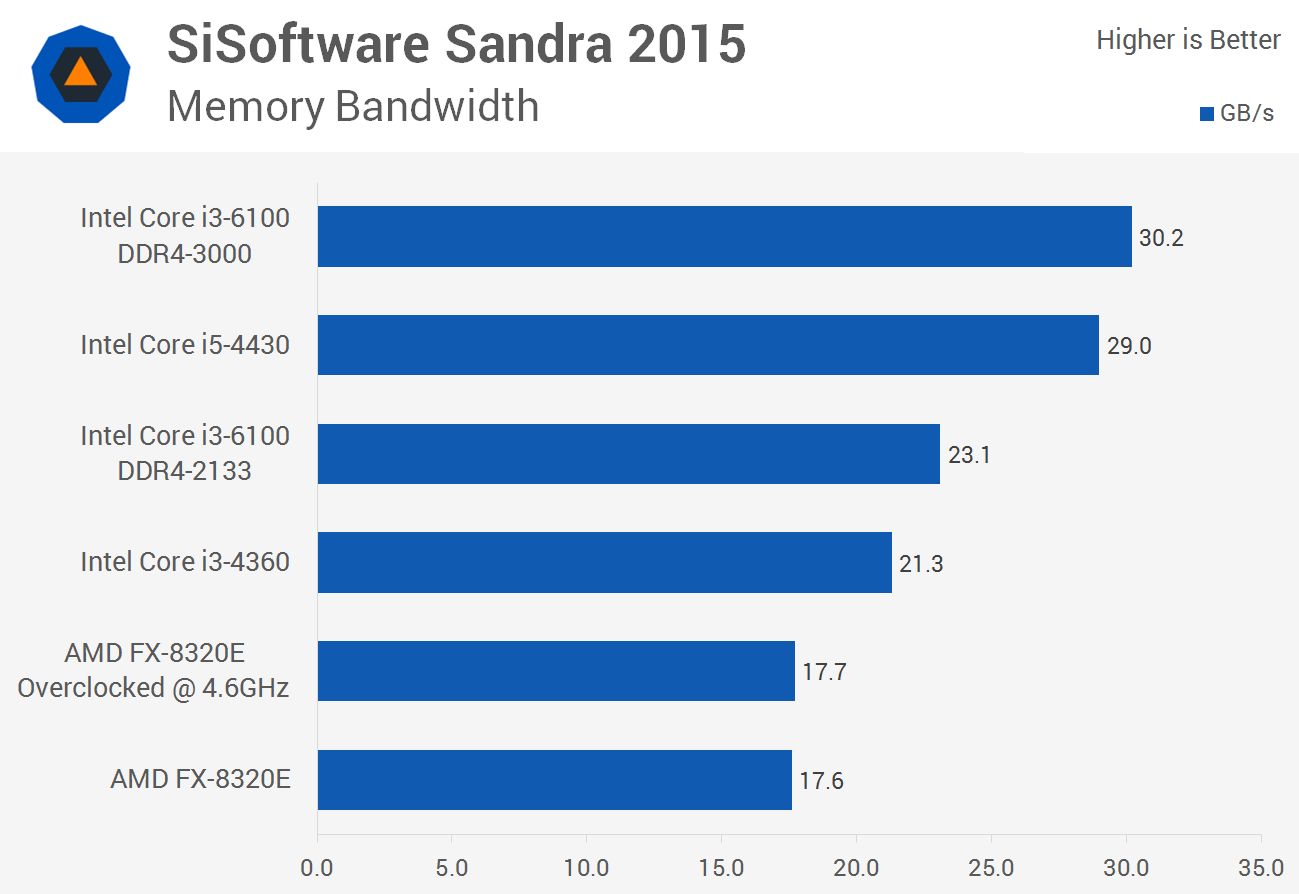
Here we see a rather significant 31% boost in memory bandwidth when increasing the frequency by 41% from DDR4-2133 to DDR4-3000. Using DDR4-2133 memory the Core i3-6100 is still 8% faster than the Core i3-4360 which happens to be running DDR3-2133 memory. Once armed with DDR4-3000 memory, the Core i3-6100 is able to outpace the Core i5-4430 by a small margin.
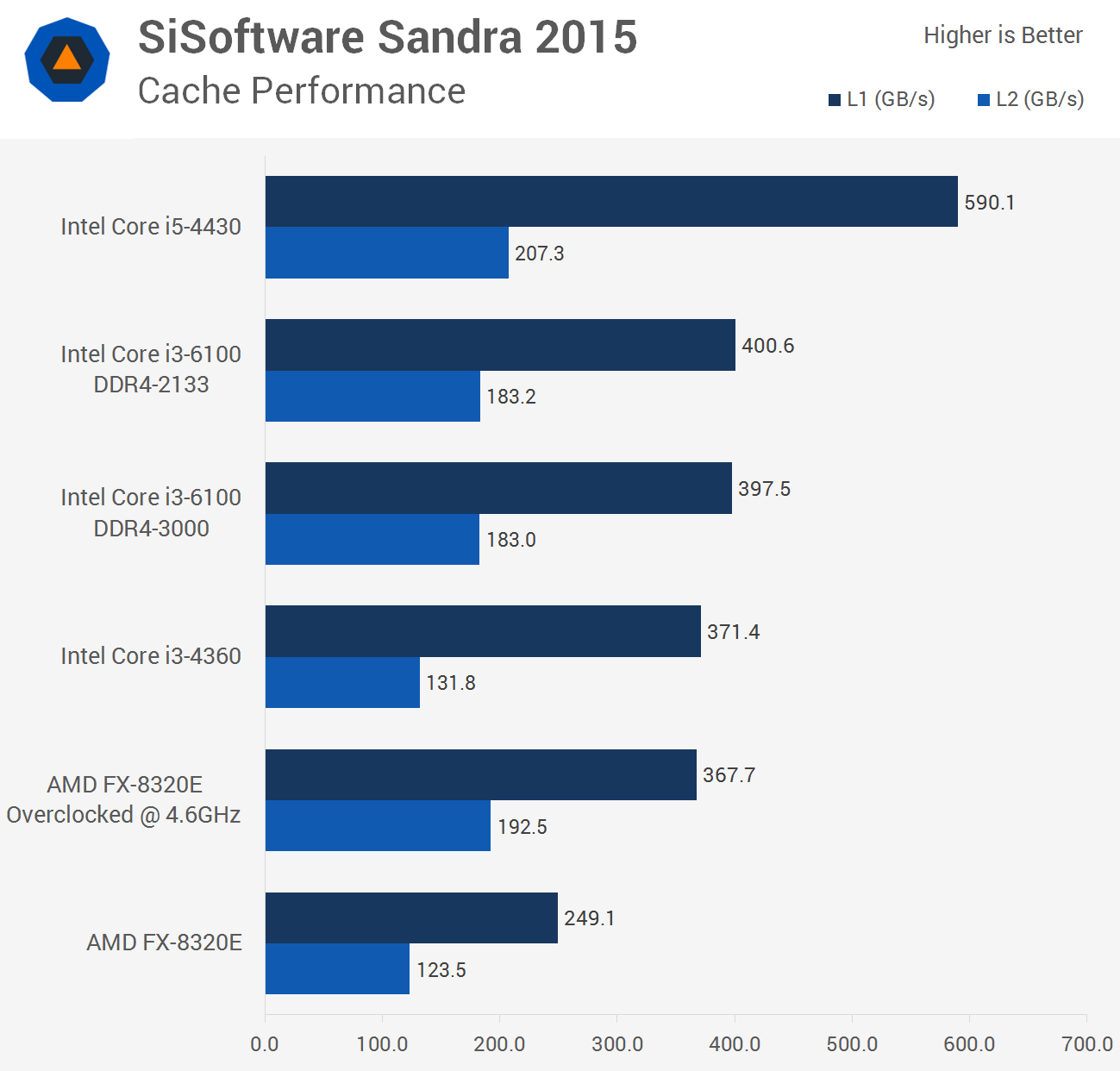
The Skylake Core i3-6100 shows a notable improvement in L1 and L2 cache performance over the Haswell Core i3-4360. This isn't entirely surprising as we found a similar thing when comparing the Core i7-4790K to the new Core i7-6700K. The Core i3-6100 is considerably faster than the 4360 when comparing L2 cache performance and not a great deal slower than the Core i5-4430.
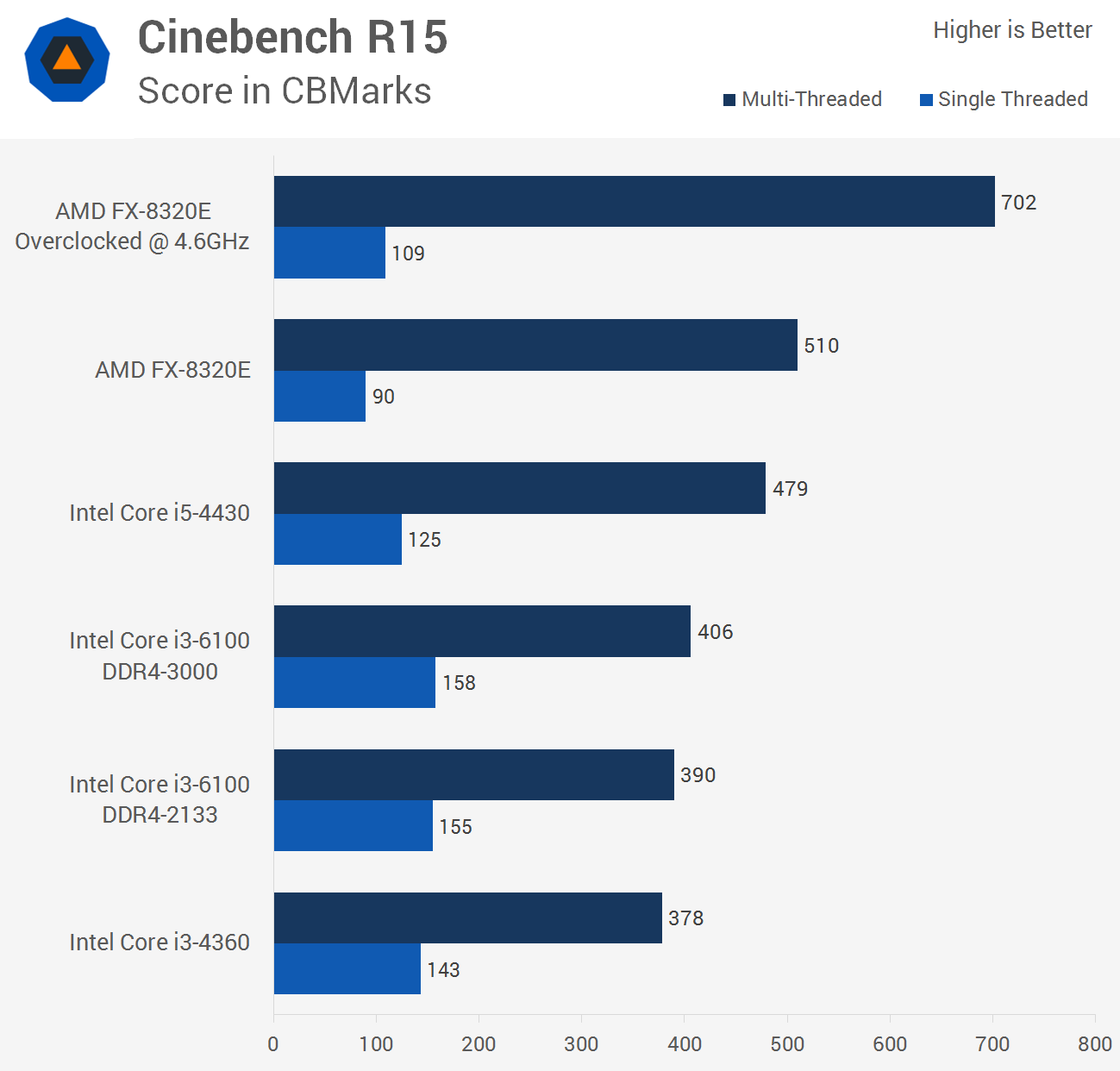
Using DDR4-2133 memory, the Core i3-6100 provides only a limited performance bump over the Core i3-4360 in the Cinebench R15 single and multi-threaded tests. Boosting the memory speed to 3000MHz had a minor impact on performance, though it did help the 6100 distance itself a little more from the 4360.
